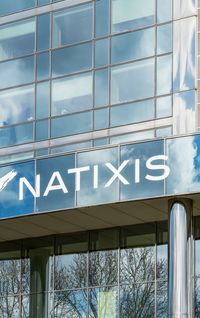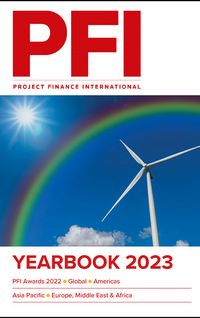S&P Global Ratings’ head of global infrastructure and utilities research Karl Nietvelt gives a cross-sector overview on how transportation and utility companies are faring in a highly inflationary environment, and shares his outlook for what lies ahead for the sector.
Often bolstered by supportive regulatory or contractual frameworks, infrastructure assets generally perform well as inflation rises. Certainly, infrastructure provides an important public service. But this also means that social factors, including affordability, could influence public and political perceptions, and ultimately regulatory considerations.
Of course, infrastructure assets are by no means monolithic, and the current inflationary environment could affect toll roads more than airports or ports. Indeed, we see the toll road subsector as more sensitive to affordability concerns by users, especially if inflation were prolonged. Utilities may also see their regulatory regimes tested for extraordinary prolonged inflation impacts, mitigated by the focus of governments on the essentiality and security of energy supplies.
Tolls resilient but political risks will rise
During periods of elevated inflation, the toll road sector often maintains a relatively strong position given its ability to pass costs on to consumers via tariffs. This is notably the case in well-established markets, such as Europe, North America and Australia, where concession agreements typically allow operators to update tariffs every year based on inflation.
For some companies, however, the time lag to adjust for inflation can last longer. This is, for example, the case for Autostrade per l'Italia, whose tariff is fixed for a nominal term of five years under the regulated asset base (RAB) framework, with adjustments for deviations in inflation only possible in the following regulatory period. Like other infrastructure companies, toll roads are asset-intensive and carry significant debt leverage that will incur higher refinancing costs, meaning such delays could weigh on profitability.
The sector’s low traffic sensitivity to tariff rises as well as its high operating margins should, however, provide a buffer to absorb cost inflation. Most toll road infrastructure assets enjoy high operating margins, typically in the range of 70%–75%, which – along with their high free cashflow ability – provide valuable breathing room.
In Europe, the key risks stem from affordability concerns, which may prompt public authorities to limit the immediate passthrough of high inflation into tariffs. French toll-road operators were faced with a similar situation in 2015, although they subsequently were entitled to recover the missed indexation in later years.
In North America, the main exposure we see for public-private partnership (P3) toll concessions is increased counterparty risks on constructors – with profitability pressures on their fixed price construction contracts as a result of cost and wage inflation. Ongoing supply constraints and strikes further compound the risks. This may herald a shift to fewer fixed-price contracts for future projects, thus increasing risks for P3 investors.
However, affordability concerns loom larger for Latin American toll road operators, which are more sensitive to protests against steep increases in tariffs. Protests of this sort have so far been limited in 2022, but in the past have prompted governments in Brazil and Chile to freeze toll-road rate hikes – even if concessions did then receive either financial or economic compensation, usually through contract extensions.
As for China, tariff hikes for toll operators are unlikely in the current context of soft economic growth, together with the government’s aim to minimise costs for drivers and businesses. Also, China’s inflation has so far proven more subdued than in other regions. The average consumer price index is likely to rise by less than 2.5% over 2022–2023. That said, toll operators face mounting costs for land acquisitions in populous regions, and average construction costs are now around four times those of two decades ago – an increase with which tariffs are not keeping pace. This inevitably weighs on credit metrics, and the typical solution will probably involve extensions of concession periods.
Air traffic sensitive to inflation
Airports experienced a stronger-than-expected summer with a significant increase in airline passenger traffic, notably in Europe, despite well-publicised operational issues. However, the industry faces mounting macroeconomic challenges in 2023, which combined with inflation, will weigh on customers’ disposable income and tone down airports' passenger prospects.
This is further exacerbated by the surge in year-on-year airfares by many carriers, due to the steep rise in jet fuel prices and higher debt burden compared with pre-Covid. Within this context of rising inflation and a fragile recovery, aeronautical airport charges will be adjusted upward as per regulatory or contractual agreements, but headroom to manoeuvre remains limited.
Railways reckon with mounting costs
Rail companies, on the other hand, are seeing their margins squeezed on account of high fixed costs. Indeed, on average, personnel and electricity account for 50% and 10% of total operational expenditure respectively.
In Europe, operators are facing current forward power prices of around €200/MWh, almost four times higher than historical averages. Governments will likely be reluctant to pass these costs on to passengers via higher tariffs, which will increase operators' reliance on public funding. This is especially true for the major national groups, such as Deutsche Bahn, SNCF, or FSI.
Regulated utilities protected
Volatility in global energy markets has contributed to a tumultuous year for power and utility companies. But European regulated utilities – covering network activities – are, on the whole, well positioned to deal with inflation thanks to supportive regulatory frameworks. Indeed, in most cases, RAB are indexed to inflation, with little or no time lag. A noticeable exception is Spain’s gas transmission and distribution regulatory framework, which does not include RAB indexation.
What’s more, an inflation-led rise in customer bills could also lead to regulatory pressure. One should, however, bear in mind that in Europe, electricity network costs typically represent 15%–20% of an electricity bill – a figure that rises to 30%–40% when excluding taxes. The majority of costs therefore stem from generation, with European power prices expected to remain high until 2024 at the earliest. Indeed, some utilities have locked in hedges of €120–€180 per megawatt hour for 2023.
Even if EU governments do implement cap prices for power generation, or opt for windfall taxes similar to those seen in UK, power generators are still set to benefit from the high commodity price environment – and governments’ focus to help consumers keep the lights on.
North American regulated utilities – which often also include generation activities – should also fully recover the rising costs of fuel, purchase power, labour, and materials from ratepayers. However, regulatory lag – the timing difference between when costs are incurred and when they are recovered – will likely result in a near-term modest weakening of financial performance. US utilities also will need to pay extra attention to keep customer bills under control in order to get their rate cases more easily approved.
The same is largely true in Latin America, where utilities have a history in dealing with inflation and regulatory regimes are largely supportive. Brazil and Colombia are expected to allow electricity utilities to pass all inflation related costs to consumers, while Mexico’s Comision Federal de Electricidad (CFE) will likely do the same for commercial and industrial clients, but implement a lower rate adjustment for residential clients – with consequences for its cashflows. Chilean power generation companies, on the other hand, face declines in Ebitda of up to 30% as they will only be able to partially pass along the increased cost of fuel.
Challenges in the medium term
As inflation drives up the cost of new construction, utilities will inevitably see their capital spending increase. In North America, inflation on renewables project spending is up 20%–30% – driven by an increase in the price of raw materials such as polysilicon and resins, as well as commodities such as nickel, aluminium, palladium, and steel. Higher labour and shipping costs compound the issue and may result in delays that undermine the profitability and creditworthiness of subcontractors and contractors alike.
But infrastructure investment is not expected to suffer significantly, especially in the US, where well over US$1.5 trillion is targeted for traditional infrastructure – including roads, bridges, airports, transit systems, water and waste-water utilities, power grids, and broadband networks.
More broadly, while interest rates are increasing globally in response to inflation, the prevalence of fixed-rate and long-dated debt in the sector means the impact will not be felt immediately but valuations are likely to come down. Many North American private and public sector infrastructure entities have taken advantage of lower interest rates and extended their maturities, lowered debt-servicing costs, or, in some cases, deleveraged.
What’s more, only about 6% of the transportation infrastructure projects' bullet debt maturities are due over the next two years. Meanwhile, infrastructure companies in Europe, the Middle East, and Africa are also predominantly financed through long-term fixed or hedged debt, but will be exposed to rising interest rates as they tap the markets to meet refinancing needs in the future.
Looking ahead, while utilities and transportation assets will continue to face their fair share of challenges in the ongoing inflationary environment, on the whole infrastructure is well positioned to weather the storm. The way in which various sectors perform, however, will likely differ from region to region.
To see the digital version of this report, please click here
To purchase printed copies or a PDF of this report, please email leonie.welss@lseg.com
![]()

















